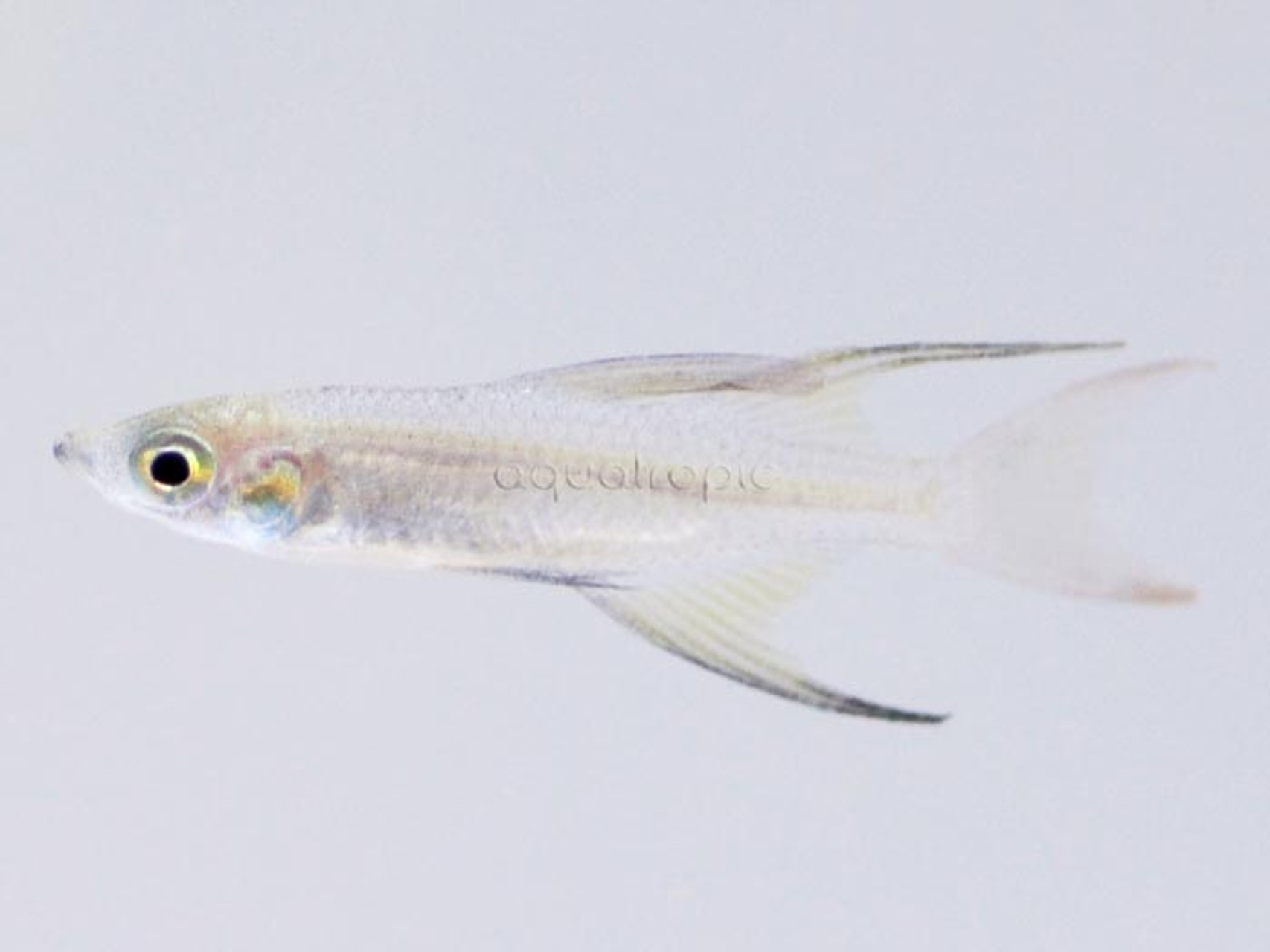Featherfin Rainbowfish (Iriatherina werneri)

Featherfin Rainbowfish (Iriatherina werneri)
Is there any fish quite so lovely as the Featherfin Rainbowfish? Though this pint-sized piscine beauty starts off life a bit drab and unprepossessing, males quickly mature into some of the most majestic freshwater creatures on the planet. In its full regalia, with fins flared dramatically as it spars with a rival male in an extraordinary pas de deux, there is no denying the appeal of Iriatherina werneri.
As the only member of its genus, the Featherfin Rainbowfish is a true novelty with little to compare it with. In its proportions (the maximum size being little more than an inch in length), this fish seems to have more in common with a tetra or rasbora or perhaps a blue eye than it does with the bulkier fishes of the Family Melanotaeniidae. You’ll find it in the wild along a small stretch of land on the southern shores of New Guinea, as well as the nearby Cape York Peninsula of Australia. No doubt this fish formerly occupied the vast land bridge which once connected these two neighboring lands, but, with the rise in sea levels that accompanied the end of the last ice age, there is now a large expanse of shallow water—the Torres Strait—dividing their populations.
Though it is readily available thanks to aquarium breeders, Iriatherina is not a fish suitable for the average community fish tank. It’s small stature, tiny mouth and delicate finnage relegate this species to systems where it will face little aggression or competition from tankmates. Good choices might include some of the aforementioned blue eyes which abound in the freshwaters of the Coral Triangle. Rasboras and smaller barbs work well, as do some of the more diminutive danios, and, for those thinking globally, perhaps a carefully curated tetra or two to round out the lot.
With their tiny mouths, feeding the adults can be a minor challenge to overcome, but crushed flake food, as well as frozen or live Daphnia or copepods make for a suitable diet. Also of importance is providing an environment with minimal water flow, as Iriatherina comes from fairly stagnant swamps and billabongs where waters are warm and perhaps a bit low in oxygen.
One of the greatest joys of keeping the Threadfin Rainbowfish is in enjoying its courtship displays and the antics of rival males as they circle one another. This species naturally occurs in large shoals, with males occupying transient territories as they attract mates. Even in smaller aquariums, a half-dozen or more specimens is recommended. Eggs are laid indiscriminately on any nearby plants, with the resulting fry tending to congregate towards the surface of the water. It’s not uncommon for some juveniles to successfully develop in a planted aquarium, but to maximize their survival, floating plants and some mosses are beneficial.